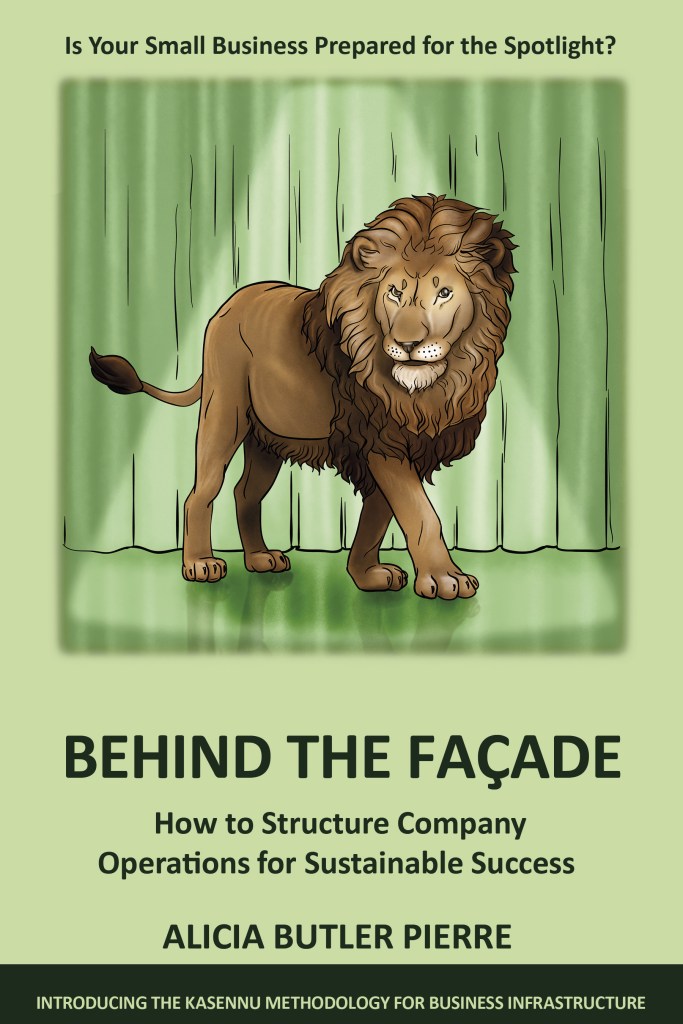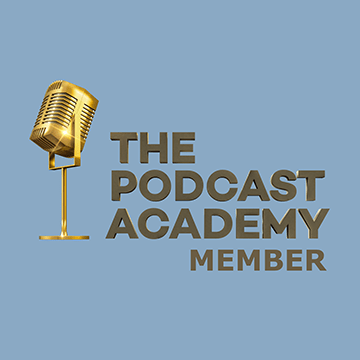Transcript
We’re back with Season 23 of the Business Infrastructure Podcast – the show where we share operational tips, tactics, and strategies to help you cure any back-office blues you might be experiencing.

As a reminder this season features a masterclass in growth strategies. At this point, we’ve talked about the importance of ideation, vetting those ideas, and then creating a strategic growth plan around those vetted ideas. But how do you actually implement that strategy?
That’s what we’re going to focus on next.
This is Ep. 290: Jon Reid Explains How to Use Project Plans to Implement Strategic Growth Goals
Jonathan Reid, or should I say Jon? How are you?
I’m doing well. Thanks a lot, Alicia. It’s always, great talking to you and working with you.
Well, it’s always great talking to you too, Jon. I’m glad you’re back on the show. And for those who don’t know, Jon is not only a dear friend and one of my most trusted confidants, but we also collaborate on many projects together. And what’s interesting, Jon, is that as good of a project manager as you are, that’s actually not how your career started, right?
Not at all. It’s funny how it came about. I actually started working with GE, went through their financial management program, and then became more of an auditor, auditing various businesses that GE actually owned, and so progressed up the ranks to the point where I was on the track to be like an executive vice president. But I transferred over from finance into technology, and then that was another whole industry that I wasn’t familiar with. So now I had the finance and information technology background. GE moved me around the country and landed here in the Atlanta area.
And I decided to actually start my own company where we started auditing processes, looking at ways that firms could become compliant. What are the things that are risks? How do you measure those risks? And I decided, you know what? Let me look at project management, because really, what I’ve been doing is managing projects. And so I got my PMP and decided that, you know what, everything is related to tasks.
It could be auditing tasks, it could be financial reporting tasks, it could be information technology implementations. Everything starts with a project plan. So then start looking at strategy. How does a firm come up with strategies? What are the goals? But then how can these goals be measurable? Because you can have a goal and you get strategic activities for each goal, but then it means nothing if you can’t actually measure it. So that then becomes a project.

And for those who may not know, PMP stands for Project Management Professional. It’s a globally recognized certification. And from what I can tell, it’s served you well, Jon. Now you mentioned project plans as a way of implementing strategy. What exactly is a project plan?
So basically, there are four stages of a project. And these four stages are, number one, initiating and defining the project. Number two, planning the project. Number three, implementing the project, and then closing and evaluating the project. Those are the four stages of a project. The next question is, How do you achieve the desired outcome? You meet with a group of individuals who are responsible for certain tasks.
So you identify first the criteria for the outcome, you brainstorm ideas, and then you discuss and you evaluate options. And then from there you start identifying the project goals. So now you identify the tasks and activities needed to achieve the outcome. And then you have to make them specific. They call them SMART – Specific, Measurable, Achievable, Relevant and Time based. Then you assemble the team.
You decide how many people are on the team, and then you select those who bring the necessary skills and experience to those tasks. You also have to worry about whether you or your team have interest and time for the project. How do we work well in a collaborative environment? Now, all of this is part of the first stage of a project, initiating and defining the project.
Whoa! That’s a lot of work in just the first stage of a project. So now that you’ve identified the outcome, the tasks to achieve that outcome, and you’ve assembled a team to perform those tasks, what comes next? I think you said, the second stage is planning the project.

So we’ve already initiated, Hey, we’ve got to get this thing done? That’s in the first stage where you initiate it and then you define it. Now, when you start getting into the planning phase, how much does it cost? What are the resources that we need to get this thing done? And a lot of people miss that piece of it. But that’s the critical piece because we’ve identified all these activities, right?
Now we can start knocking off the fact, well, no, that’s not really relevant. How much time does it take? What are the resources required to get that thing done? You take all these activities, all these tasks, and then you start rating them. Is it mission critical or not? What is the financial or resource viability to this? And when you start ranking them. Now you can see what the low hanging fruit is, which is costs less resources. And the cost is not always dollars and budget, but it could be resources. Who has the time available to get this thing done?
Jon, as you and the team evaluate where you can get the most done with the least amount of resources required, at what point do you have a conversation about the target completion date for the whole project?
Remember, a project is a one-time undertaking with a specific outcome. If the specific outcome is that we have to build a drainage system, we know that we have to build this drainage system by your third quarter of whatever the year is. So you already know up front, one of the reasons why we’re starting this project.
A project actually basically keeps you on task to get to your specific and desired outcome. So when we brainstorming about these ideas of initiating the project, we already know it’s got to be done by X date. And sometimes we already know how much money we have in a budget to get this project done, because that phase of it, that initiating it, is like, Okay, well, how much it will cost us to put this drainage system in? Okay, we think $300,000. We gotta get this done by the third quarter. So that overarching goal, you already know, but the specific activities related to that overarching goal is what the project plan will help you with.

Okay, got it. So, to reference the X-matrix that we’ve talked about in the previous episodes…that tool is all about helping us figure out what those overarching goals are. We also define action plans and its those action plans that we can transfer into the project plans that you’re talking about. Sorry for that diversion, I just thought it’s really important to show how a project plan is a tool that literally can help companies actualize their overarching growth goals. Okay, back to the second stage, the planning stage.
So now we’re developing the project plan. We’re planning it. All project plans, they typically include the resources, schedule of work, including the roles and responsibilities, and any contingency plans. So, as we’re planning it, we know that Hey,we need resources. How do we get the resources? How do we schedule the work? Who’s going to do what, where and when? And what are the contingencies for that plan?
Is the selection of the software that you use part of that conversation also in building the plan?
That’s a good question because it actually depends on the firm you’re working with. I use Microsoft Project a lot. Microsoft Project, it’s fairly generic and, a lot of firms use that. But you can also develop a project plan in Excel.
Okay, so to recap – at this point, you know your project’s overarching goal, the activities required to reach that goal, the resources needed, a target completion date, and the budget to get it all done. From seeing so many project plans I know that we’re simplifying things. Can you go into a little more detail about building the project plan?
The components of a project schedule include a sequence of tasks and activities. So you start, you have your overall activity, but there are subtasks up underneath that major task. So you start looking at start date, completion time, responsibilities, deadlines, milestones. Those are the typical components of a project schedule, typically what you do now we’re into implementing the project plan, so we hold a launch meeting.
The purpose of that meeting is to introduce the people, gaining commitment, clarifying any misunderstandings, who are the key stakeholders and other key people. And we talk about the desired outcome, what’s important. Let’s talk about critical deadlines, roles and responsibilities, and how much information will be communicated. How do we keep on track?

So everything you just described happens in the third stage of the project – implementation. Before we move on to the final stage, I want to bring up a point about sequencing tasks. Something that I know from my own stint at managing projects is that you have to also look at dependencies. In other words, there may be times when you want to do certain tasks at the same time, but you can’t because one task must be completed before another one can start.
That’s why I like Microsoft Project because there’s a Gantt Chart which shows you the dependencies. So if task one has a completion date a month from now. Task 2 may be created within task number one timeframe, but task three can’t get started until task one is finished. So, you develop dependencies. And those dependencies are based on, once again, tasks, responsibilities, and start and completion dates.
You can get off track if those dependencies are not effectively managed. So if task three, we’re waiting and there’s a team waiting and there’s money involved for task three, but is dependent on task two, which is dependent on task one. What is the critical deadline? What is the milestone that you know that this task will be completed and another task is dependent on that? So you have to measure all of that. That’s the beauty of a project plan – whatever the sequence of tasks and activities are, how are they managed effectively, and what task is dependent upon another and that’s why you create these milestones.
Jon, one of the other critical points mentioned in the episodes about constructing an X-matrix and its associated action plans, is the importance of reporting metrics as well as having regular check-in meetings. Can you talk about the role a project manager plays in providing project status reports to give visibility into the implementation of a project?
Your goal as a project manager is one thing – how do I keep the project on track? That’s your job. As a project manager, you have to monitor the work. You monitor the sequence of tasks and activities, and you communicate on a regular basis with everyone involved because remember, when we looked at identifying the goals and assembling the team, we identified key stakeholders and some stakeholders who may not be key, but you communicate with everyone involved, your progress on the tasks.
You have to address any issues and problems right away. And then if necessary, you have to revise the plan and schedule. Let me tell you, I’ve never been in any project where we were always on schedule. But your job as a project manager is to keep the project on track, communicate, and then even if you have to change the scope, you change the scope and communicate it, and then you respond quickly to any changes.

Perfect. Okay. And so as the project is moving along and you’re checking in, you’re producing reports to let people know the status of the project. What does that closing phase look like? Because I’ve seen and have been a part of so many projects where by the time you get to the close out, everybody’s kind of burned out and things aren’t always nicely wrapped up, lessons learned, documented. So what really should be a part of this closing stage of a project?
Closing any project is basically where you just finish any administrative tasks and you formally announce the project’s completion. And that could be in the report. And your report then will show you what necessary steps need to be taken going forward. And then you thank team members for their participation. You help those team members move on to other priorities. But you do have this checklist, though.
When I’m closing this project, I do with any of them. Let’s look at the administrative tasks, make sure that the activities we’ve identified have been completed. Let’s formally announce the project’s completion and then provide next steps as necessary for the project in case anything comes up after closure. And then you help team members with any anomalies that may come up after the project’s completion. So that’s how you close the project out. You finish the task, formally announce it with a report, provide next steps, and then helping team members move on to other priorities.
And I would imagine, Jon, that once the project is completed, there’s some ongoing work that needs to take place especially if its linked directly to a strategic growth goal.
One of the things I found useful is to have this strategic roadmap and timeline. I’ll give an example. If we have a series of goals, we have a series of activities and tasks. We’ve met it. Now, what is the roadmap and timeline? So your last report to say, okay, in fiscal year 2022, we will establish x. Third quarter fiscal year 22, we will establish y. Fourth quarter, we will do this. So you try to develop, like, a one to three-year strategic roadmap and a timeline to ensure that, okay, well, here’s the project.
We’ve met the deadlines here. Did the project stay within budget? What was the desired outcome? All right, now how do we measure it? And then it’s easy to create a graphic to show you the roadmap. The roadmap will tell you, Alright, this is where we keep on task ongoing. All right, third quarter, we’re supposed to be doing this? Have we met that fourth quarter, the roadmap says we were supposed to do this. Did we do it right? The project plan is actually in place. It’s been finished. But now creating the strategic roadmap and timeline is actually pretty key.

Yes, and to tie this into the X-matrix and the associated action plans, you’d make it a point to communicate the completion and outcome of the project up to top management. Then update the action plans accordingly. Now because this is the business infrastructure show, we know that one of its pillars is processes. Often processes must be documented in the form of process maps and standard operating procedures (or SOPs) to ensure the continuity of the project’s outcome.
Exactly. Exactly. And, part of the ending of that project, which the project may never end, but it’s ongoing, is lessons learned. What do we learn? So after the first quarter, after the first year, what lessons have we learned? And did we document those lessons learned? That also is part of your strategic roadmap.
Well, Jon, I can’t thank you enough for describing the four stages of project planning. It’s a lot of work, but if we’re serious about achieving breakthrough growth, then this type of rigor is absolutely necessary. I’m sure there is someone who may be listening to us right now, thinking “This is too much work. I’m just going to just make sure stuff gets done.” But that brings us right back to the danger of just pouring resources into ideas we haven’t properly vetted and validated using tools like the Lean Canvas. What parting words of advice do you have for people who may have that “Just-get-it-done” mindset?
Unfortunately, many organizations devote valuable resources, employees’ times and money to fully conceived projects. Learning, even individually, learning to manage your task effectively not only benefits your organization, but it benefits you. You have to understand that being able to effectively manage your job or manage a project will benefit not only just the corporation.
It helps you, and it benefits you as an individual by effectively thinking a different way. So think about a series of tasks that an individual has to do. If you take that, your task, from inception to completion, it helps you not only at work, but in your personal life as well. We keep talking about work and organizations, but I look at it from a practical standpoint – how’s it helping me as an individual?
How can that effectively help me as a person manage my life? Even now, personally, I have a whiteboard that I put down a series of high level tasks and I cross them off. And I think because I’ve learned some project management skills now, I’m able to now effectively help my life by looking at it, seeing it, checking it off, going to the next task.

That’s a really good point, Jon. I’ve most recently used project management to help me sell a couple of houses within the past year. Now, I know you also have a project management course that you teach, right?
Yeah. I have a course which is called Practical Project Management for Non-Project Managers. It basically teaches you how to take projects from inception to completion. The course will just increase your ability to carry out those four stages of a project we talked about earlier. It helps you understand what makes a project successful.
It helps you initiate the final project plan steps, keeping it on track and bringing it to a close, and then evaluating success. I think everyone should take a course like that. And it’s not an elongated process, if you will, but it gives you that depth and that detail about, Hey listen, this is what we need to do to make sure that a project is successful.
Well, Jon, it was a pleasure having you on the show again. We’ll have links to your contact information in the show notes.
It’s great talking to you, as always, Alicia.
Thank you for listening! If you’d like to connect with Jon, then be sure to visit BusinessInfrastructure.TV. There, we’ll have a link to his LinkedIn profile as well as some other project planning resources for you. Again, you can find this information in the show notes at BusinessInfrastructure.TV.
If you enjoyed this episode, then please subscribe, give us a five-star rating and leave us a review. Now that you know more about project planning, it’s time for you to complete one that connects to your growth strategy.

Join me in the next episode where I’ll share how we, here at Equilibria worked with Jon to build project plans based on the information in our X-matrix. Be sure to come back to the place wherever you’re listening so you don’t miss this next episode!
Until then, remember to stay focused and be encouraged. This entrepreneurial journey is a marathon and not a sprint. This podcast episode was written and produced by me, Alicia Butler Pierre. Audio editing by Olanrewaju Adeyemo. Original score and sound design by Sabor! Music Enterprises. Video editing by Gladiola Films. A special thank you to our sponsor, Equilibria, Inc., and to Grant Revilla for creating the show notes.
This is the Business Infrastructure – Curing Back-Office Blues podcast.


















